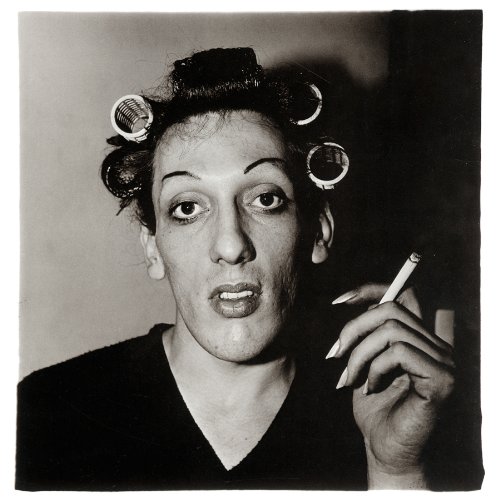Lorsque Diane Arbus est décédée en 1971 à l’âge de quarante-huit ans, elle avait déjà une influence significative, même quelque chose d’une légende parmi les photographes sérieux, bien que seul un nombre relativement faible de ses photos les plus importantes étaient largement connues à l’époque. La publication de Diane Arbus : An Aperture Monograph en 1972 ainsi que la rétrospective posthume au Musée d’art moderne ont offert au grand public sa première rencontre avec l’ampleur et la puissance de ses réalisations. La réponse a été sans précédent. La monographie de quatre-vingts photographies a été éditée et conçue par le peintre Marvin Israel, ami et collègue de Diane Arbus, et par sa fille Doon Arbus. Leur but en faisant le livre était de rester aussi fidèle que possible aux normes par lesquelles Diane Arbus jugeait son propre travail et aux manières dont elle espérait qu’il serait vu. Universellement reconnue comme un classique, Diane Arbus : An Aperture Monograph est un chef-d’œuvre intemporel avec des éditions en cinq langues et reste le fondement de sa réputation internationale. Près d’un demi-siècle n’a rien fait pour diminuer l’impact fascinant de ces images ou la controverse qu’elles inspirent. Les photographies d’Arbus pénètrent dans la psyché avec toute la force d’une rencontre personnelle et, ce faisant, transforment la façon dont nous voyons le monde et les gens qui s’y trouvent. Il s’agit de la première édition dans laquelle les séparations d’images ont été créées numériquement; les fichiers ont été spécialement préparés par Robert J. Hennessey à l’aide d’impressions de Neil Selkirk ; photos en n.b.
When Diane Arbus died in 1971 at the age of forty-eight, she was already a significant influence―even something of a legend―among serious photographers, although only a relatively small number of her most important pictures were widely known at the time. The publication of Diane Arbus: An Aperture Monograph in 1972― along with the posthumous retrospective at The Museum of Modern Art―offered the general public its first encounter with the breadth and power of her achievements. The response was unprecedented. The monograph of eighty photographs was edited and designed by the painter Marvin Israel, Diane Arbus’s friend and colleague, and by her daughter Doon Arbus. Their goal in making the book was to remain as faithful as possible to the standards by which Diane Arbus judged her own work and to the ways in which she hoped it would be seen. Universally acknowledged as a classic, Diane Arbus: An Aperture Monograph is a timeless masterpiece with editions in five languages and remains the foundation of her international reputation. Nearly half of a century has done nothing to diminish the riveting impact of these pictures or the controversy they inspire. Arbus’s photographs penetrate the psyche with all the force of a personal encounter and, in doing so, transform the way we see the world and the people in it. This is the first edition in which the image separations were created digitally; the files have been specially prepared by Robert J. Hennessey using prints by Neil Selkirk.























